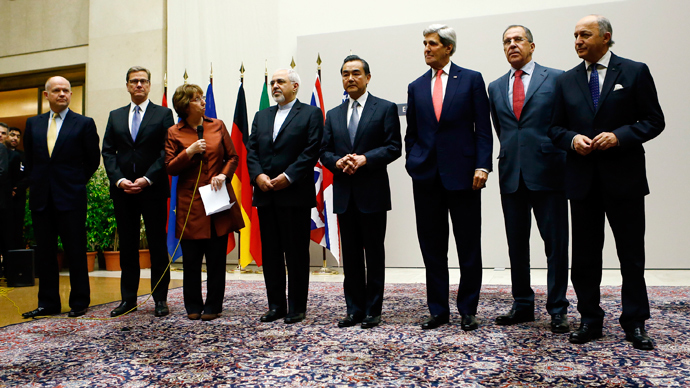In April, 2015, a ship carrying hundreds of refugees trying to reach Europe capsized in the Mediterranean, killing nearly 700. The tragedy rekindled discussion on the refugee crisis that has been sweeping through Europe. As conflicts in the Middle East and North Africa continue, migrants are boarding boats managed by smugglers or taking treacherous land routes through Turkey, all seeking to find shelter, safety and livelihood in Europe. More than 100,000 migrants have crossed the Mediterranean into Europe so far this year, with as many as 1.6 million additional refugees waiting in Turkey to enter Europe.
The issue has been a controversial one within the European countries themselves: last year, Italy ended its extensive and relatively successful maritime search and rescue operation Mare Nostrum, citing its own inability to fund the mission and the reticence of other European countries to contribute. Under Mare Nostrum. Italy had rescued more than 100,000 people in 12 months, housed and clothed them, and attempted to adjudicate asylum claims.
Countries bordering the Mediterranean, including Italy, Malta, and Greece, are disproportionately burdened by incoming refugees. The Dublin Regulation, an EU law, dictates that the European country that is the first point of entry for a refugee must handle the asylum application. Because of this law, some 90 percent of refugees end up in a handful of member states. With Greece and Italy also suffering from economic problems, the countries have been calling on the European members to help shoulder the burden. In June, Italian Prime Minister Matteo Renzi lashed out at fellow EU leaders for rejecting mandatory migrant quotas, accusing them of looking after only their own interests. While Mare Nostrum has shuttered its doors, the European Border Agency Frontex has been strengthened, intercepting more than 280,000 people attempting to make “illegal border crossings” into the EU.
Other EU countries, including France and the United Kingdom, are less than eager to step in. Though EU leaders have agreed to resettle the 40,000 migrants who have already arrived in Europe, and EU lawmakers are now proposing an amendment to Dublin that would allow minors to apply for asylum in any EU state they choose, anti-immigration rhetoric has been taking hold across the continent. Immigrant-bashing parties are on the rise in several countries, including France’s Front National, with platforms often singularly aimed at lowering the influx of migrants.
Antonio Guterres, the UN High Commissioner for Refugees, has called for Europe to expand its rescue and patrol program, as well as the legal avenues for migration to Europe so that people would not have to risk their lives at sea. He also emphasized the “need for a comprehensive European approach to address the root causes that drive so many people to this tragic end,” highlighting – like many others – that refugees flow into Europe less because of a “pull” and more because of the “push” of conflict, famine, and human rights abuses.
There is a larger, deeper issue: the complexity of international law regarding the subject. The body of international treaties, agreements, conventions and norms that make up the framework of international law affects the current migrant crisis in two distinct ways.
Firstly, under international maritime law and customary international law, governments are legally obliged to rescue any castaways and victims of boat wreckage that they see. This is in part what led to the formation of the relatively successful Mare Nostrum. Many policymakers, however, believe that rescue operations such as Mare Nostrum serve as a “pull factor” and encourage migrants to make the dangerous journey over the Mediterranean, knowing that they will likely be rescued.
Secondly, and most significantly, the term “refugee” itself is fraught with legal and political implications. According to the 1951 Geneva Convention Relating to the Status of Refugees, to be recognized legally as a refugee an individual must be fleeing persecution on the basis of religion, race, political opinion, nationality, or membership in a particular social group, and must be outside the country of nationality. As times have changed since 1951, however, so have the contemporary drivers of displacement: now, they are as complex and multilayered as ever, propelling migrants from their homes for a range of reasons including intrastate conflict, poor governance and political stability, environmental change, and resource scarcity. These people, many argue, have just as much claim to the title of “refugee” as any other: but because they do not fall under the strict definition of persecution afforded by the Convention, they are legally unable to claim the same rights.
For this reason, some scholars have started using the term “forced migrant” to encompass the large groups of people that have been increasingly thrust out of their homes by conflict, endemic poverty, natural disasters, and more. These migrants, most of whom fall outside the recognized refugee and asylum apparatus, are not covered under existing legal frameworks and are exposed to considerable risks. Though asylum countries have developed a number of ad hoc legal provisions to deal with non-traditional protection needs, many say this is not enough. Roger Zetter, Emeritus Professor of Refugee Studies at Oxford University, characterizes this dilemma as “the disjuncture between contemporary patterns and processes of forced displacement and the current legal and normative frameworks to protect the displaced.”
Jill Goldenziel, Research Fellow at the Belfer Center for Science and International Affairs at the Harvard Kennedy School, has proposed a way to address the issue: a “Displaced Persons Convention” that would “define a category of people to be granted temporary legal protection because their forced displacement threatens international peace and security.” This convention would “provide procedures for cost-sharing and geographic distribution for those who qualify for permanent resettlement abroad,” and would outline further provisions for preventing population displacement. Goldenziel argues that new international law “can give both people and states clarity as to what their rights are,” bringing the 1951 Convention in line with contemporary needs.
Today’s number of unauthorized migrants is estimated by the OECD to be more than 30 million. As forced migrants continue to search out ways to cross the Mediterranean into safety, European countries will have to come to terms with the urgent need for a coherent policy response. More importantly, international institutions and policymakers will have to work within the realms of international law to update the 1951 Convention to reflect the current global landscape.





